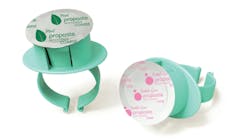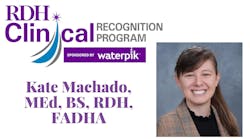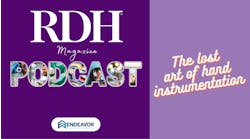Three things need to be assessed prior to presenting in a public forum. They are credibility, topic, and audience.
The call came late Friday night. My friend and mentor on the Government Relations Council asked if I was available Tuesday to present testimony before the Oregon Health and Human Services Committee at our state capitol. My heart started pumping like a big bass drum, adrenaline caused me to break into a sweat, and I thought, "Feel the fear and do it anyway."1
I was available, so I asked, "What do I have to do?" Turns out I had to re-familiarize myself with the issues, write a speech, have it edited by our lobbyist, turn the hard copy in, and present it to the House Committee! All that in three days! Practicing my philosophy of "Walk through every open door," I said yes, and got to work.
While I love to get in front of an audience and present information or try to persuade an opinion, this is very scary and daunting for most people. I've taught pubic speaking to undergrads at the university level, and the majority of students are scared to death to be in my class! They were there only because it was required. This requirement is similar for dental hygienists. The accreditation standards for DH education include three credit hours in speech communication.2 These credits are often acquired through a public speaking course, and hopefully the skills are used to educate small groups concerning preventive oral care. Many times students are required to do oral health presentations at local health fairs or schools. However, it is safe to assume that the vast majority of dental hygienists do not take the opportunity to improve their public speaking skills after their class experiences.
Perhaps your personality does not lend itself to grand gestures in the public arena, but you may still be invited to share what you know with different groups. Dental hygienists are in a unique and powerful position to act as oral heath care educators. Hygienists are educated and licensed authorities in the preventive oral health arena. Many hygienists communicate well one-on-one with their patients, but imagine how much more influence they can have in a public forum.
The good news is public speaking aptitude can be learned. It is an attainable set of skills available to anyone who wants to acquire them. Just as the technical skills of scaling and root planing are learned through practice, so are public speaking skills. Preparation and practice should be implemented for successful public speaking.
Preparation
Three things need to be assessed prior to presenting in a public forum. These will ensure a positive and successful public speaking event. They are credibility, topic, and audience.
• Credibility — Credibility is the foundation of effective public speaking. How credible are you? Your audience must perceive you as credible in order to truly hear your message. Being prepared to speak will increase your credibility and lower your anxiety. Credibility has to do with competence, trustworthiness, and dynamism.
Competence is knowledge, expertise, skill, or judgment of the topic. Why should the audience listen to you? What more do you need to know to present your subject in an educated and thorough way? When you attend a CE course or listen to candidates on TV, what convinces you of their credibility? Is it their experience in the topic? Their obvious display of research? Their educational credentials or history? Your audience is looking for clues to your competency.
Trustworthiness is displaying character by speaking with honesty and consistency. Our patients and the public trust us to be informed and honest about oral health care issues. They expect that we will conduct ourselves with the professional and ethical standards of doing no harm and telling the truth. These ethical standards are clearly laid out in the ADHA Code of Ethics.3 Our license comes with the responsibility to be trustworthy. This includes presenting information that is thoroughly researched and giving credit where it is due. When we use facts or words in our speeches that are someone else's, we have the ethical obligation to disclose that. Dental hygienists have some built-in credibility by our licensure and education. The fact that we are dental health professionals adds to our trustworthiness.
Dynamism refers to perceptions of the speaker's confidence, activity, and assertiveness. Does your audience see you as invested in the topic? Do you display positive energy while speaking? Do your credentials or volunteer efforts tell your audience that you truly care about the topic? Even a timid personality can project confidence and authority when speaking. Simple tips of planting your feet firmly beneath you, taking time to breathe and keeping eye-contact with your audience are ways to portray dynamism.4
• Topic — Are you passionate about your topic? Do you care deeply about the issue and those you are representing? This caring will be translated to your audience, making you more effective and believable. I have a colleague who is passionate about fluoride and the positive effects it has on reducing tooth decay in children. She is an ideal person to educate and advocate for water fluoridation. I am concerned with barriers to dental health care, so speaking to legislators regarding bills that increase the public's access is a good fit for me.
Perhaps you care about infant decay rates or soda pop in schools, or educating the public on how their oral health affects their overall heath. Knowing what you care about can help you choose a topic for public speaking.
Sometimes a group will ask you to speak on a topic they have already discussed. This allows you to grow as a speaker and learn a new topic. For example, I was asked by a pharmacy association to speak on over-the-counter dental health-care products. While I had to do a lot of research, I got to combine it with the oral/systemic links of periodontal disease and whole health. If you aren't comfortable with a proposed subject, you can refer the group to another dental professional who is familiar with that particular topic.
• Knowing your audience is extremely important. The more you know about your audience, the more prepared you'll be to present your content effectively. Who will be in the audience? What are their demographics? Are they college-aged, retired, male, female, legislators, general public, other health-care providers? Will they have some knowledge of your topic? Do you think will they be neutral, receptive, or unreceptive to your message? What are they expecting from you? You want to gather this type of information to better analyze your audience in order to adapt your presentation to them.5,6 If your audience is college students and you want them to know the importance of oral health, you might stress the undesirable effects like bad breath and transferring STDs. With an audience of older adults, you might want to stress oral links to systemic disease and whole health. A speech for other oral health care professionals will be different than one for the general public.
Speech Writing
The big item under preparing is writing your speech. It's helpful to have a clear idea of what you want to say. This seems like common sense, but when you start researching, it's often necessary to narrow and focus your message to meet the needs of your audience and to meet time requirements.
A good speech is one that follows a logical flow with an introduction, body and conclusion. The old adage of "tell them what you are going to tell them, tell them, and tell them what you told them" is a good rule to follow. The audience doesn't know the subject matter as well as you do, nor are they reading a paper on the subject. They are listening to you, so repeating your main points is a good way to help the audience remember them.
• Introduction — Your introduction should include an opening to gain attention, such as a riveting story or stirring quote. The introduction also should include some way of connecting with the audience. For example, when I spoke to the pharmacy group, I told a story of how difficult I thought pharmacology was in dental hygiene school, and I have the highest regard for their profession. This helped make a connection between us and served to let them know I respect their time and education. Your introduction should end with a preview of your main points.
• Body — The body of your speech is where you press your main points. Use stories and anecdotes, as well as accurate, up-to-date facts and statistics to support your main points. Move through the speech with a rational progression so your audience can follow you easily. Use humor to keep the audience awake and tuned-in to your message. No one likes to listen to a boring presentation. Humor can add "punch" to your statistics and facts and help the audience remember you and your topic.7
• Conclusion — The conclusion is where you summarize your main points and hopefully leave the audience with a strong take-home message. Tell them what you want them to do with the information. "I hope you've learned the importance of having good oral health to support your overall health. I encourage you to get a thorough exam by a dental professional." Close your speech in a memorable way. You don't want to say, "Well, that's all, thank you," and sit down. You can use a stunning quote or humorous incident, perhaps tying it in with a story from your introduction. This brings the speech to a logical conclusion and leaves your audience with a positive impression.5,6
• Practice — Now that you've prepared, practice must be put on the "front burner." Practicing your speech is the No. 1 key to reducing anxiety! When you know your material, understand your progression, and know where you will put your stories and humor to make your message come alive, your anxiety will decrease.
• Visualization —To lower anxiety and increase confidence, "see" yourself speaking with poise and grace. You are relaxed and self-assured. You are happy and enjoying yourself. Visualize success. Keep in mind your audience wants you to succeed. See your audience engaged in your presentation and understanding your message.
• Practice in front of a mirror — This allows you to get comfortable with your material and see how you physically present yourself. You want to stand tall, with your head up and eyes on the audience. No slumping. Plant your feet comfortably about hip width apart and stand still. Many people rock or fidget when they're nervous. These habits detract from the message. As you gain more speaking experience, you'll feel more comfortable with your body stance and movements. Your physical demeanor gives non-verbal cues to your audience about confidence and dynamism.
With preparation and practice, you can become proficient and even excellent in public speaking. Just like clinical skills, learn the basics and keep practicing to improve. Dental hygienists can have great influence in the public forum educating on oral health issues. The same messages we care enough to give one-on-one can be multiplied in a public arena to reach a greater number of people.
Speaking at the capital was a highly stressful, yet fulfilling experience for me. My knees were shaking and my stomach was roiling, but I used preparation and practice to reduce my anxiety and communicate my message with confidence and credibility. Our legislation to increase access to dental care for the public passed that year! These kinds of successes keep me speaking out loud, and I hope many of you will join me in the public arena of health-care education.
"If all my talents and powers were taken away from me by some inscrutable Providence, and I had my choice of keeping but one, I would unhesitatingly ask to be allowed to keep the Power of Speaking, for through it, I would quickly recover all the rest." — Daniel Webster
Get to the venue early — This allows you to see the physical space you'll be presenting in. You want to know the set-up, where you'll be standing, how far away the audience will be, and who will be helping you with AV needs. Getting there early can help you gain clues to your audience. If you have opportunity for face-to-face interactions with attendees prior to speaking, you may discover personal stories or something about their group or organization that will help you gain their attention or increase your credibility. I once spoke at a dental hygiene graduation right after a student slide show. I quickly incorporated some of the song lyrics they had used for the slide show into my presentation. This brought humor and presenter-likeability to the speech.
Wear appropriate, comfortable clothing — Your audience and event will determine how formal you need to dress. Use your attire and attitude to present the image you want to portray — that of a confident professional. For example, if you're speaking to a group of business people, you want to dress in professional attire. If you're speaking at a women's weekend retreat, you can dress more casual. Make sure you're comfortable so that your focus is on your audience, not your tight new boots.
Hydration — Stay hydrated! Drinking plenty of water the day before and of your presentation keeps your vocal cords lubricated. Always ask for water on the stage or podium where you are presenting. Some speakers like to use sugarless mints or oral sprays to keep their saliva flowing and prevent cottonmouth while speaking.
Find the attentive ones — Some members of your audience will show you they are engaged in your message. They have good eye contact with you, they tend to nod their heads affirmatively and let you know with their non-verbal behavior that they are attentive. Focus on these folks for your own positive feedback and encouragement.
Maintain eye contact — Find a few people in the room to look at directly, but also keep your eyes moving across the whole audience. You want to make every attendee feel included and involved. Clear direct eye contact lets your audience know you're confident of your message and that you care about them.
Speak clearly — It's important to enunciate and speak slowly enough for understanding. Many people rush their words when they're nervous. Consciously slow down and articulate your words. Be sure to use correct pronunciation of names and terms. If you're not using a microphone, be sure to project to the back of the room. If you're miked, test the volume and sound clarity prior to speaking.
Breathe — Take several deep breaths before you start, perhaps while you're being introduced. Take another breath right before you speak. Deep conscious breathing keeps blood circulating, giving oxygen to the brain. Breathing is also important for keeping the body calm and alert.
Smile and have fun! — Your audience will warm to you if you have a pleasant and happy countenance. It is often difficult to smile when nervous, particularly if your lips are twitching or shaking. Just smile, and everything will be easier and brighter. Think of your audience as a group of friends who want you to do well and want to hear what you have to say. If you can view public speaking as a way to effectively communicate and get that adrenaline high, it becomes fun. Smile and laugh with your audience.
About the Author
Kelli Swanson Jaecks, RDH, MA, holds a Master's degree from Oregon State University in Communication and Adult Education, where she taught Leadership and Public Speaking. Kelli is an active leader in the ADHA, serving at the local, state and national levels. She provides healthcare education through her company, Verbal Impact, LLC. She can be contacted though her website at www.verbalimpact.org.
References
1. Jeffers S. (1988) Feel the Fear and Do It Anyway. Accessed Feb. 25, 2008 from http://www.quotationspage.com/quotes/Susan_Jeffers/
2 American Dental Association Commission on Dental Accreditation. (1988). Accreditation standards for dental hygiene education programs. Accessed Feb. 28, 2008 from http://www.ada.org/prof/ed/accred/standards/dh.pdf.
3. ADHA-Bylaws-Code-of-Ethics. Accessed Feb. 25 2008 from http://www.adha.org/aboutadha/index.html
4. Hackman MZ, Johnson CE. (2004). Leadership; A communication perspective, 4th Ed., Waveland Press, Inc., Long Grove, Ill.
5. Nelson P, Titsworth S, Pearson J. (2007). Public speaking; A guide for the engaged communicator. Mcgraw-Hill Companies, NY: NY.
6. Presentation tips for public speaking (2006). Accessed March 3, 2008 from http://www.aresearchguide.com/3tips.html
7. Public Speaking: Why Use Humor? (2007). Accessed March 3, 2008 from http://www.public-speaking.org/public-speaking-humor-article.htm







